Chapter 6
Oral hygiene
The majority of patients wearing orthodontic appliances are teenagers and as a group they are always hungry and need regular intakes of food. They tend to snack between meals and very often the wise words on the dietary sheet given to them in the surgery when their appliance is fitted is forgotten or ignored. When the tummy rumbles between meals or temptation, in the form of a hard, sticky or crunchy snack, is put in their path. Either way, the wise words on the advice sheet fly from their thoughts as the food flies into their mouths.
The oral hygiene leaflet should be a way of helping the patients to help themselves, to maximise all the effort they put in by doing the right things in the right order.
If they do this, they minimise the danger of permanently damaging their teeth by decalcification and decay.
So, how effective is an oral hygiene leaflet and how do you, as a dental nurse, get your patient to take the advice on board?
FOR REMOVABLE APPLIANCES
Removable braces have acrylic base plates which can trap food between them and:
- the palate
- the lips
- the tongue
Patients are advised after every meal (and snack!) to:
- remove the appliance and clean it under running water, using regular tooth-paste
- do this over a sink which is full of water; should the appliance slip out of the patient’s hand, it will not shatter on the basin
- clean their teeth thoroughly
- clean their palate and gums, taking extra care around the gum margins
- once a week, soak the appliance in a cleaner, such as Retainer Brite (Figure 6.1), which is designed especially for the purpose
Figure 6.1 For removable appliance cleaning.
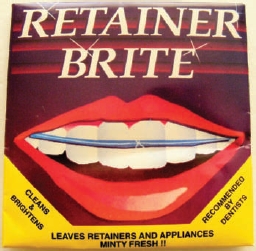
No appliance can be self-cleansing and trapped food debris can irritate the soft tissues of the mouth and they can become inflamed.
FOR FIXED APPLIANCES
Fixed appliances are not the easiest to keep clean, but the consequences of not doing so are permanently marked or decayed teeth.
Straight but marked teeth is not a good look. Try and impress on patients that these are their teeth they are damaging. It is their responsibility!
Besides regular tooth brushing, and flossing if possible, the orthodontic patient has to be extra careful with:
- hard, sticky or crunchy foods
- sweets or crisps between meals
- fizzy or cola drinks
- chewing gum
- fresh fruit juice (especially if drunk between meals)
The problems and consequences are as follows:
- Sucking sweets, such as mints and toffees, leads to cervical decalcification
- Eating hard, sticky or crunchy foods damages brackets, clasps and archwires
- Fresh fruit juice, diet and ‘cola’ type drinks are acidic, attacking the enamelon the tooth surface, making the tooth surface glass-like, especially if‘swished’ around teeth. This can erode the incisal edges and may lead to sensitivity (drinking straight from a can could make this worse); will attack the plaque trap areas around brackets and wires (Figure 6.2)
- Chewing gum can get stuck around wires and brackets
- Mints can be sucked slowly, often held in the buccal sulcus (They can have a high sugar content which is leached into the saliva and into the plaque, which turns to acid, which leads to caries; Figures 6.3 and 6.4.)
Figure 6.2 Incisal erosion due to fizzy drinks drunk from a can.
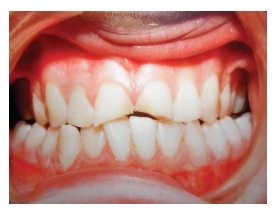
Figure 6.3 Caries between overlapping teeth.
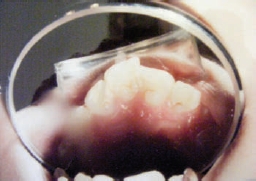
Figure 6.4 Cervical caries.
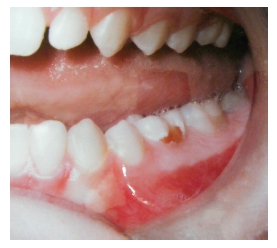
Figure 6.5 Decalcification of teeth after deband.
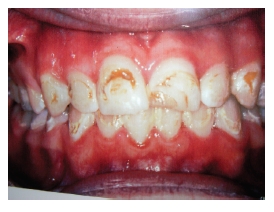
Figures 6.3 to 6.5 are not the images of their teeth that patients are expecting.
Show them photographs of the damage (Figure 6.5), warning them, ‘is it worth the risk’?
WAYS PATIENTS CAN HELP THEMSELVES TO PREVENT PROBLEMS
Toothbrushes and brushing
It does not really matter whether patients use a manual or an electric brush; it is what they do with it while it is in their mouths that counts. However, a brush with a small head is very helpful and some electric brushes now have small heads especially designed for orthodontic use.
Patients need to have a routine, a sequence of brushing so that every part of the mouth gets cleaned and nothing gets overlooked.
They also need to know for how long to brush and to use a timer if it helps them.
Do not use the same brush until it is almost bald; change it regularly.
It is advisable to clean/>
Stay updated, free dental videos. Join our Telegram channel

VIDEdental - Online dental courses


